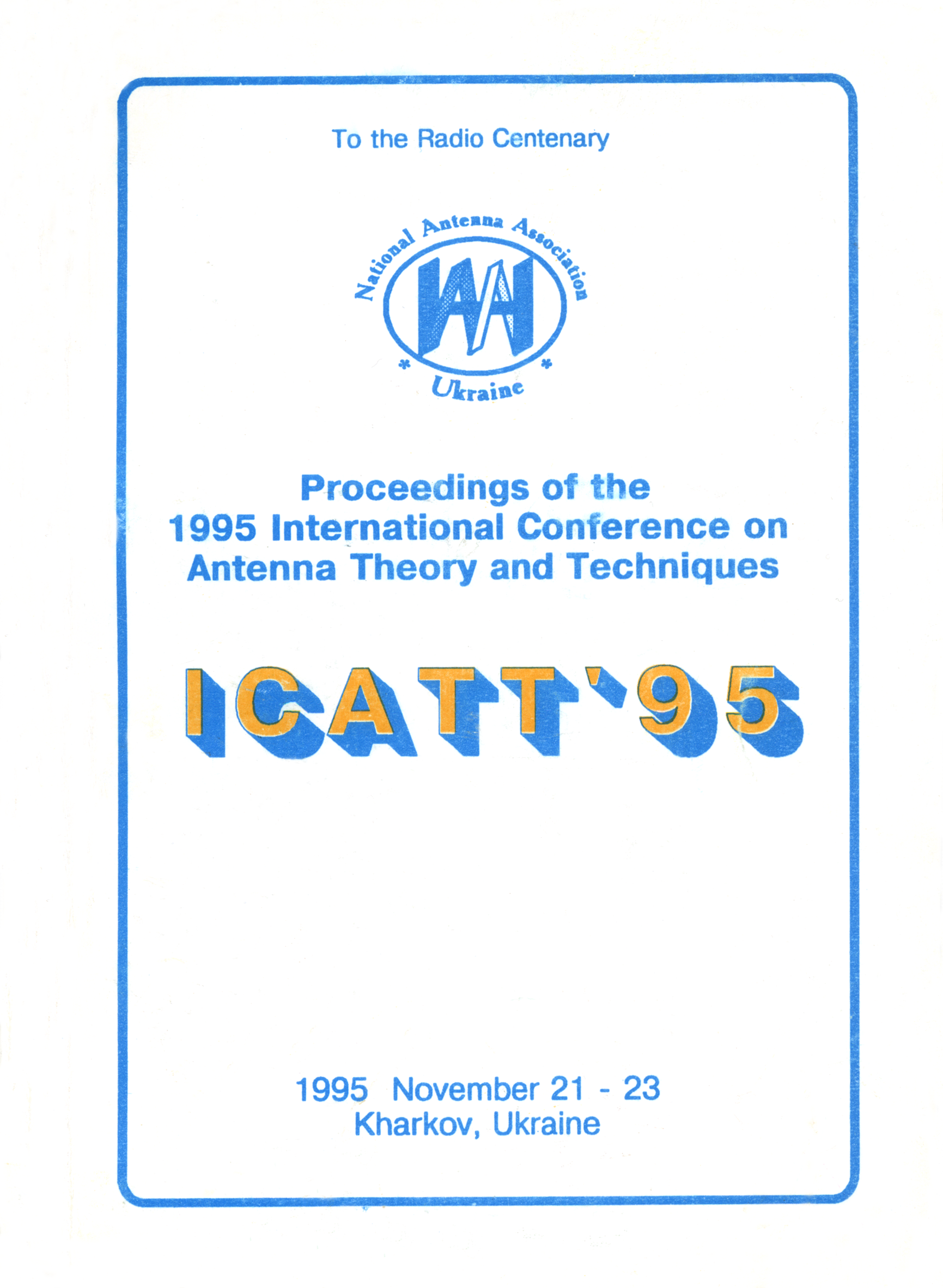Kirchhoff’s theorem extension and Kirchhof’s method development in applied problems of wave diffraction
DOI:
https://doi.org/10.1109/ICATT.1995.1234101Abstract
Kirchhoff's method is the oldest of heuristic methods in the applied diffraction theory. At the same time it seems that the capabilities of the method are far from exhausted. The range of problems being solved confines itself, as a rule, to the stationary boundaries. Meanwhile, the noted limitations are overcome both in principle and in a number of specific problems. The aim of the present survey is to attract attention to these facts.
The original physical idea of the method is Huygens’ Principle, the initial analytical statements of this principle are the rigorous integral relations connecting the field values on the boundary of the arbitrary closed surface with their values inside the surface. The first part of the paper treats the extensions of these relations obtained first by Helmholtz (1859) and Kirchhoff (1883), the second part presents in short the essence of the method and gives the survey of concrete problems where restrictions on its traditional application are lifted.
Electromagnetic statement of Huygens’ principle was obtained for the first time by Kotler (1923), the form convenient for calculations was obtained by L. A. Wainshtein (1957). For diffraction on the objects with a randomly moving surface the scalar and electromagnetic statements were obtained by V. Khromov (1963) and T. Gutman (1968), respectively.
Kirchhoffs method consists in that the boundary values of the field entering the rigorous integral relations are replaced by simple reasonably chosen values, for example, obtained on the basis of geometro-optical solution of the corresponding problem. So, the boundary value problem reduces to quadratures. The paper presents the known estimates of the KirchhofFs method applicability limits for the diffraction stationary problems, and a concept of how these estimates relate to those of the method applicability to the corresponding nonstationary problems solution. When considering the concrete problems one observes indirect evidences of their solutions confidence: their convergence to the known results with the parameters values for which results exist, physical interpretation of the solutions, results of the experimental research, etc.
The following problems are considered in brief:
- general design methods for solving the stationary problems of diffraction on the bodies placed in a smoothly nonhomogeneous medium and diffraction of a plane electromagnetic wave on a perfectly conducting disk placed in the axially symmetric plasma medium,
- diffraction of a plane wave on a time-expanding segment of a sphere,
- scattering of a plane wave on a surface oscillating with harmonic and random oscillation laws,
- diffraction of a plane linearly polarized electromagnetic wave on a time-expanding perfectly conducting sphere,
- diffraction of a unit step-function plane wave on a circular aperture in the planar screen; the possibility to apply Kirchhoff's method for calculating radiation and diffraction of the supershort pulses immediately in the time domain without harmonic analysis.

